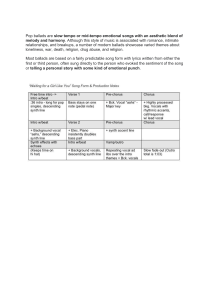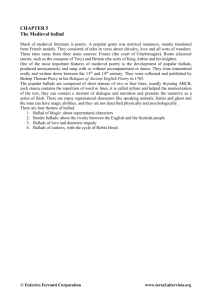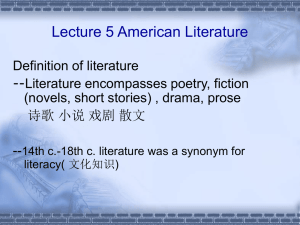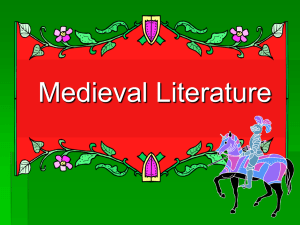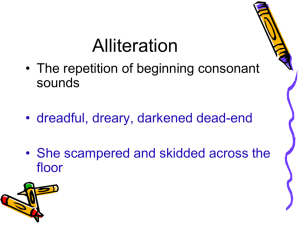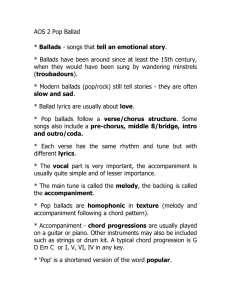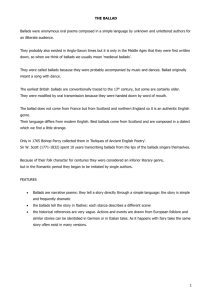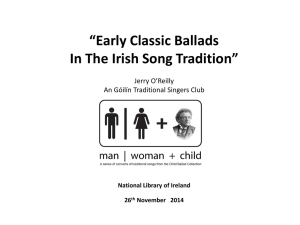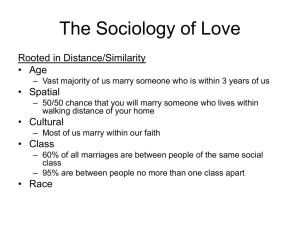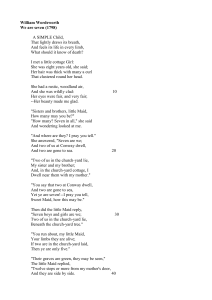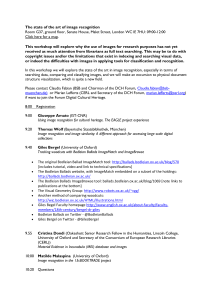English & Scottish Ballads
advertisement
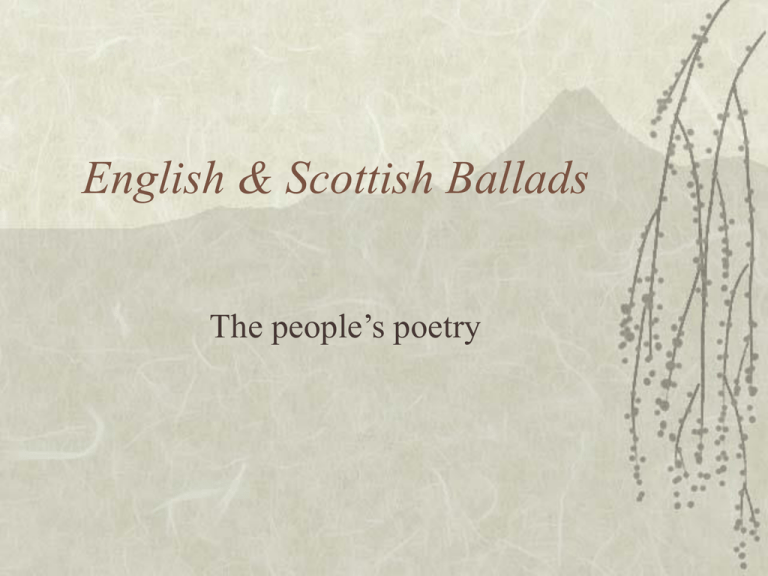
English & Scottish Ballads The people’s poetry I. The Purpose To entertain No movies? No TV? Can’t read? Go down to the town square and listen to the wandering minstrel sing stories. II. The Origin A. The oral tradition Literature passed on by word of mouth, mostly sung, in the 15th century B. The folk process …is the process by which songs and stories are passed along orally and, as a result, undergo an evolution or change. C. They are anonymous, but authorship is shared by the community. III. Characteristics of the Ballads A. Subject Matter 1. Stories came from everyday life of the common folk. 2. Common themes: a. disappointed love b. jealousy c. revenge d. sudden disaster e. adventure and daring f. activities of the nobility III. Characteristics of the Ballads, cont’d B. Style 1. Narrative Style a. simple and direct b. single incident c. little characterization d. little description e. little background information f. story usually told through dialogue g. use of refrain or repetition (for participation) h. some information is implied rather than stated III. Characteristics of the Ballads, cont’d B. Style, cont’d 2. Form, usually: a. 4-line stanza b. 4 metric feet to the line c. contain end rhyme 3. They were meant to be sung III. Characteristics of the Ballads, cont’d For example… Fair young maid all in the garden Strange young man, passer-by Said, “Fair maid, will you marry me?” This then, sir, was her reply. “Oh no, kind sir, I cannot marry thee, For I’ve a love who sails all on the see. He’s been gone for seven years; Still no man shall marry me.” III. Characteristics of the Ballads, cont’d Notice the stresses: Fair young maid all in the garden Strange young man, passer-by Said, “Fair maid, will you marry me?” This then, sir, was her reply. “Oh no, kind sir, I cannot marry thee, For I’ve a love who sails all on the sea. He’s been gone for seven years; Still no man shall marry me.”
